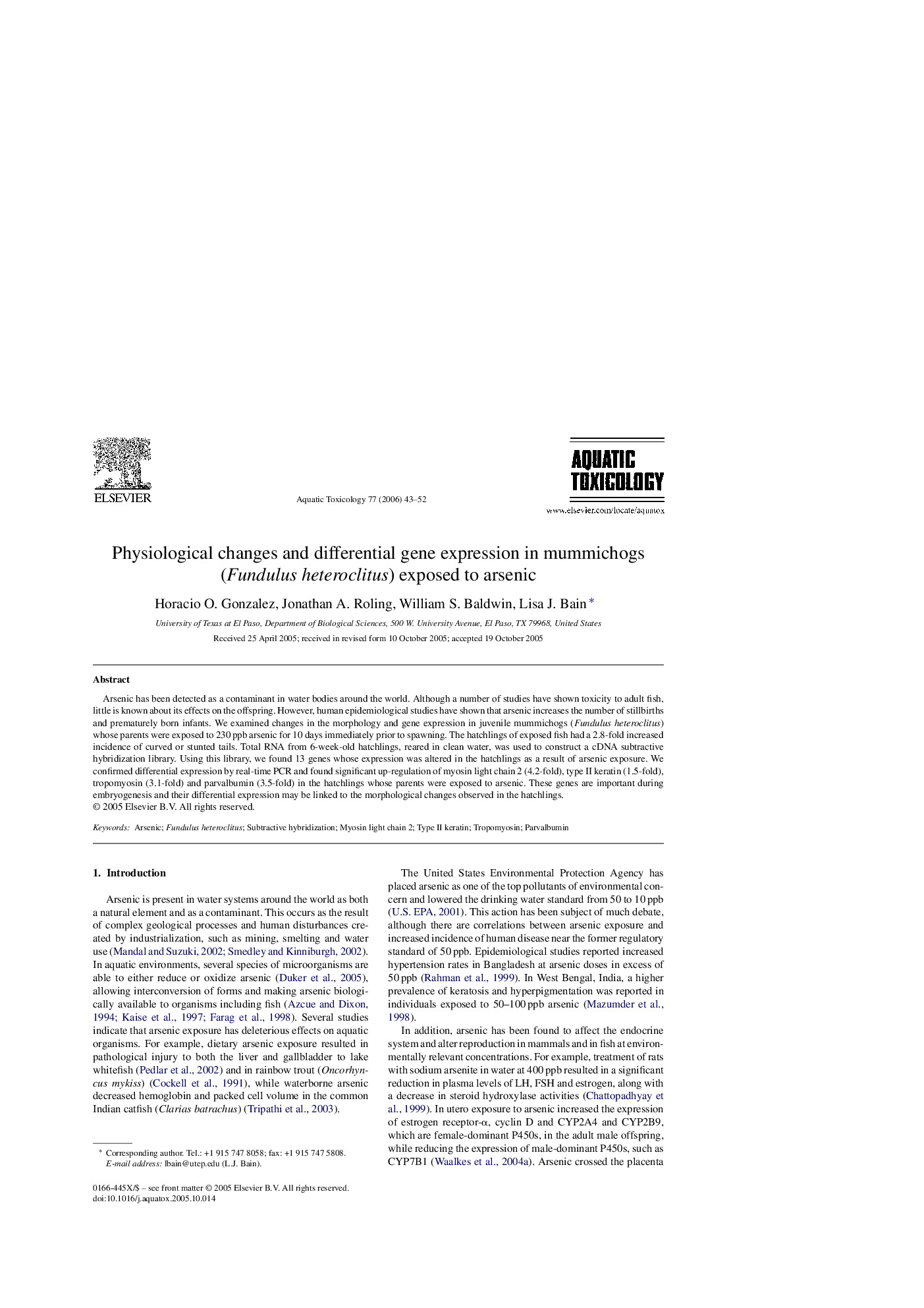| Article ID | Journal | Published Year | Pages | File Type |
|---|---|---|---|---|
| 4531475 | Aquatic Toxicology | 2006 | 10 Pages |
Abstract
Arsenic has been detected as a contaminant in water bodies around the world. Although a number of studies have shown toxicity to adult fish, little is known about its effects on the offspring. However, human epidemiological studies have shown that arsenic increases the number of stillbirths and prematurely born infants. We examined changes in the morphology and gene expression in juvenile mummichogs (Fundulus heteroclitus) whose parents were exposed to 230Â ppb arsenic for 10 days immediately prior to spawning. The hatchlings of exposed fish had a 2.8-fold increased incidence of curved or stunted tails. Total RNA from 6-week-old hatchlings, reared in clean water, was used to construct a cDNA subtractive hybridization library. Using this library, we found 13 genes whose expression was altered in the hatchlings as a result of arsenic exposure. We confirmed differential expression by real-time PCR and found significant up-regulation of myosin light chain 2 (4.2-fold), type II keratin (1.5-fold), tropomyosin (3.1-fold) and parvalbumin (3.5-fold) in the hatchlings whose parents were exposed to arsenic. These genes are important during embryogenesis and their differential expression may be linked to the morphological changes observed in the hatchlings.
Keywords
Related Topics
Life Sciences
Agricultural and Biological Sciences
Aquatic Science
Authors
Horacio O. Gonzalez, Jonathan A. Roling, William S. Baldwin, Lisa J. Bain,
